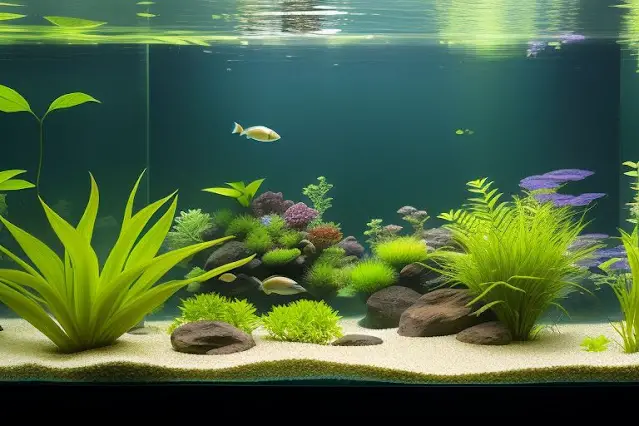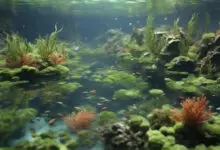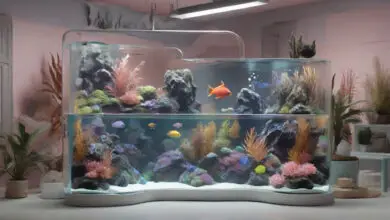Keeping Tanks Clean with Ultraviolet Light

Germs like bacteria and parasites make fish sick in aquariums. Fish waste and leftover food also dirty tanks over time. Filters help but cannot remove all the germs and waste fully. So owners need extra cleaning methods for super clear water. One useful tool is an ultraviolet (UV) sterilizer.
UV sterilizers use special light bulbs over water. The light kills germs and some types of algae flowing by. This cuts way down on spreading diseases in tanks. It also helps keep water extra clear and clean long term. UV tools are easy to add to most filters for these wholesome benefits.
How UV Sterilization Works
UV light is able to damage cells in plants and creatures directly. Special parts inside cells absorb the light waves and get overpowered. This makes the cells no longer work right.
For germs like bacteria and parasites, it destroys them fully since they are tiny and weak. Algae spores also cannot reproduce if UV light harms them. So shining water containing these things with UV stops their spread. Tanks end up cleaner without functioning germs or algae floating around freely able to multiply.
Pros of Using a UV Sterilizer
UV sterilizers offer reliable cleaning perks for aquarium owners. They are affordable extras that make maintaining health easier.
1. Kills Harmful Bacteria
Lots of bacteria types live in tanks. Many are helpful to the nitrogen cycle and fish health. But some bacteria only want to infect fish and make them sick. Flowing water through UV exposure kills off these bad bacteria so they cannot spread. This protects fish long term.
2. Controls Parasites
The larvae of nasty parasites like ich and flukes get destroyed by UV. This stops tanks from dealing with heavy loads during an outbreak. Fish benefit from lower overall parasite amounts threatening their health when UV blasts their reproductive stages.
3. Reduces Green Water Algae
Green water algae is caused by tiny floating single celled plants. They turn tanks into ugly pea soup if given too many nutrients. Running UV sterilizers blasts their reproductive cells apart to beat back massive green blooms.
4. Polishes Water Clarity
Even without algae issues, UV improves water transparency a lot. It damages other microorganisms, bits of waste, and organic compounds clouding up the view. Tanks shine brighter with fewer surviving particles blocking light penetration.
Cons of UV Sterilizer Additions
UV tools boost water quality in the ways mentioned. But they also come with a few drawbacks to consider before buying.
1. Kills Good Bacteria Too
The same germ-killing power of UV does not distinguish between helpful and harmful bacteria. So some useful filter bacteria get destroyed going through the lights. Tanks can cycle backwards if not enough bacteria survive overall.
2. Can Encourage Resistant Algae
Over time, some advanced algae species mutate under constant UV blasting. This allows them to reproduce once again even exposed to the light. Now drug-resistant strains take over tanks instead of easier types before.
3. Requires More Power Use
UV bulbs need full electrical outlets to run their intense wavelength beams. This ups energy costs a small amount for those with many existing pumps and gear already using lots of electricity. The bills add up for high tech tank setups.
4. Replacements Add Up
Inside UV units, special light bulbs wear out every 6-12 months with daily use. Owners must buy new replacement bulbs for the sterilizers to keep working properly. These costs recur for the lifespan of the tank.
Types of UV Sterilizers
Several kinds of UV tools exist to kill germs in aquarium systems. Each has pros and cons to their use for different setups and budgets.
Hang On Back Style (HOB)
These small UV parts connect onto existing hang on back filters easily. Water passes through powerful lights on its way down into tanks from the filters. This purifies the flow powerfully with minimal effort.
HOB UV units are the most affordable option out there. And they integrate with current filters nicely. But their small size limits contact time for the water under UV bulbs. So their maximum potential germ killing power stays a little lower.
| HOB UV Sterilizers | |
|---|---|
| Pros | Low cost, simple to add on, no extra plumbing |
| Cons | Limited flow and UV exposure time |
Canister Filter Attachments
For those willing to open up filtration machines, inside connections are possible too. This lets large canister volumes channel all flow through intense internal UV setups. Exposure time and sterilization skyrockets this route for maximum impact.
But annoying tube cutting and connecting risks leaking or flow issues if done incorrectly. And filters must run UV nonstop or leave a non-purified bypass route too. Complex installation limits canister UV use to advanced hobbyists comfortable modifying gear.
| Canister Filter UV | |
|---|---|
| Pros | Strong exposure from big flows |
| Cons | Tricky setup, filters always on |
Green Killing Machine (GKM)
Popular standalone units are Green Killing Machine or GKM models by AquaTop. These powerful XL chambered devices shine water for very thorough UV treatment durations. They offer all the punch of medical or commercial separators scaled down affordably.
GKMs require their own pump to push water through separately from other filters. Hoses hook to tank lines anywhere for super easy setups though. And their large chambers allow picking different flow rates or models for every tank size needing intense UV help the most. Their only downside is higher price for the very best performance.
| Green Killing Machine | |
|---|---|
| Pros | Strong treatment, easy to install |
| Cons | More expensive, needs own pump |
Spot Treating Certain tanks with UV
Not all tanks need full time UV sterilization because not all tanks suffer certain problems. Targeted use of UV on tanks susceptible to outbreaks works well without wasting money running units constantly for no reason. Dialling UV power up and down this way saves money and electricity in the long run.
Hospital Tanks
When sick fish get moved to hospital or quarantine tanks, turning on UV blasts helps kill their contagious pathogens. This avoids transferring back new dormant diseases to display tanks later. Temporarily running units only when illness appears contains problems.
Grow Out Systems
Frag tanks and live food cultures often grow high amounts of plankton to feed corals or baby fish. But dense cultures crash easily with rapidly spreading diseases. Using UV for just a few weeks while growing out populations avoids losing entire batches to contagious outbreaks. Handheld UV wands work great short term too.
Tanks With Sensitive Species
Discus, dwarf shrimp and other fragile stock fear medication dosing when disease arises. But their weak immune systems invite parasites and bacteria to exploit them. Running preventative UV instead gives cleaner water to avoid mass death scenarios when these species live in higher densities.
Spot treating tanks avoids bad germs taking over during vulnerable phases. Leaving off between issues saves money on bulb replacements. And selective use decreases risks of breeding resistant algae strains long term across all systems.
How to Install and Use UV Effectively
Proper use and maintenance makes all the difference for UV units living up to their full potential. Correctly sized flow rates combined with new bulbs gives optimal cleansing for cleaner tanks.
Flow Rate Matching
Water cannot get over exposed to UV light. But it still needs significant exposure durations to allow killing parasites and green water particles present. Most UV systems list a maximum flow rate they can handle effectively for aquarium sizes.
Going over these flows limits reduces effectiveness a lot by shortening exposure times. Undersized units never fully clear up stubborn problems. So owners must pick models delivering the right turnover gallons per hour their tanks need for peak performance purifying water.
| Tank Size | Needed Flow Rate For UV |
|---|---|
| 10 Gallons | 100 GPH or less |
| 20-29 Gallons | 100-150 GPH |
| 30-39 Gallons | 150-200 GPH |
| 40-55 Gallons | 200-300 GPH |
| 60-75 Gallons | 300-425 GPH |
New Bulb Replacements
UV bulbs do not visibly look like they burn out. But their intensity drops significantly over 12 months max. Sterilizers cannot give the same germ-killing power even with water flowing through still.
Replacing UV lights on schedule is crucial for units to keep providing maximum cleansing. Otherwise water passes through getting overexposed with limited gains destroying green water or parasites present. Wasted electricity and bulb life results.
Proper UV Placement
For standalone sterilizers, hose positioning matters for their performance too. Outlets need connecting prior to directional tank returns or spray bars. Intakes route from pumps or canister outputs to the UV inlets first instead.
This sequences flow getting purified before blasting out across aquarium systems. Optimized setup prevents any bacteria or algae bypassing kills from incorrect plumbing layouts. Double checking connections takes a few minutes and saves headaches.
Conclusion
UV adds powerful supplemental disease prevention for aquariums when used right. Light wavelength technology safely gives ultra clean water lacking most germs, parasites and green algae cells able to bother tanks. Fish and inverts live healthier when fewer pathogens threaten delicate species.
Proper flow ratings and routine bulb changes helps UV units deliver maximum water clarifying effects long term. Harnessing their helpful beams allows less worrying about sickness spreading across connected systems. Quarantines also run effectively with temporary assistance clearing up new fish before adding them to displays.
Investing in quality UV gear gives peace of mind that another tool exists to manage cleanliness beyond just water changes and chemical dosing alone. Their special lights beam enhanced stability keeping tanks pristine when properly supplemental to regular maintenance. Consider adding UV to high risk delicate tanks first to witness all their helpful support possible optimizing aquatic health.







